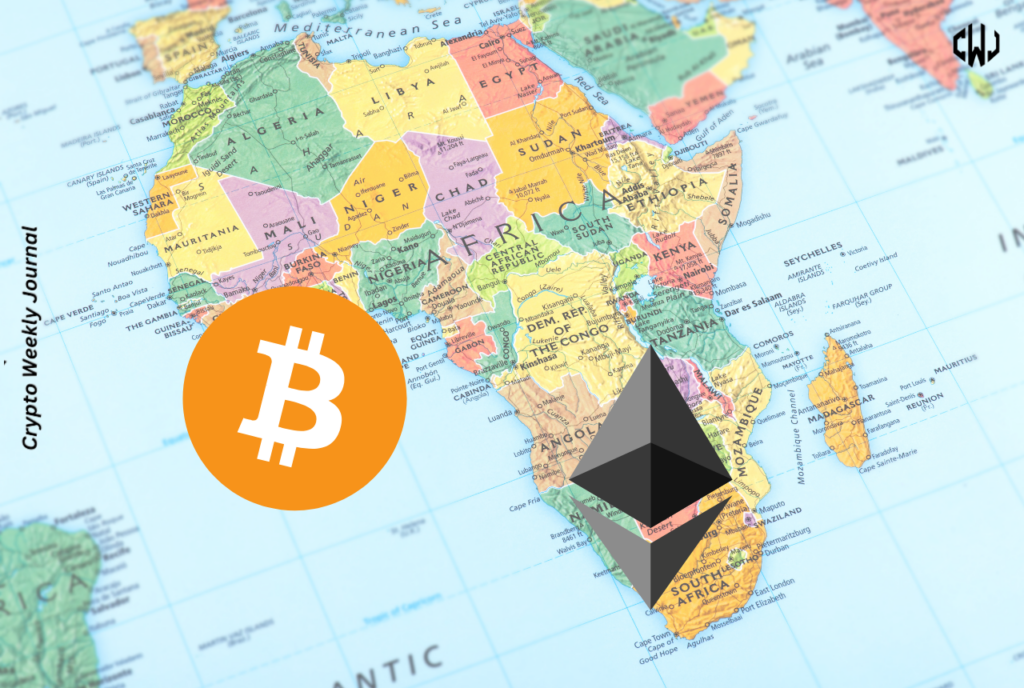- Sub-Saharan Africa saw $125 billion in crypto transactions between July 2023 and June 2024, despite a smaller economy.
- Nigeria ranks second globally in crypto adoption, with Kenya, Ethiopia, and South Africa in the top 30.
- Stablecoins account for 43% of Sub-Saharan Africa’s crypto transactions, aiding cross-border trade and currency stability.
Cryptocurrency adoption in sub-Saharan Africa has been on an upward trend and was involved in 2.7% of the global transaction volume in the period between July 2023 to June 2024. While this is the lowest percentage of the global crypto economy, the region has seen a $7.5 billion increase in on-chain value and now holds an estimated $125 billion. This growth shows that cryptocurrency is steadily becoming part of the financial system of the region although it has a relatively small economy than other global zones.
Source: Image by Chainalysis
According to a recent report, Nigeria, Kenya, Ethiopia and South Africa among other nations are at the forefront of this change. Nigeria alone has remained consistent in its position as one of the global leaders in the world of crypto, having secured the second spot on the Global Adoption Index. Other African countries such as Kenya, Ethiopia, and South Africa also rode the list and secured positions in the top 30 for crypto adoption. The usage of digitals assets in these nations has been boosted by practical applications of the new asset class; Africans are using digital currencies for business transactions, hedging against inflation, and for more frequent, smaller consumer transactions.
Africa’s Crypto DeFi Boom
Perhaps one of the most interesting aspects of Sub-Saharan Africa’s crypto adoption is that it leads in the adoption of DeFi. DeFi provides essential services in a world where conventional banking is scarce in the region. As of 2021, only 49 percent of adults in Sub-Saharan Africa had access to a financial institution, based on data from the World Bank. DeFi thus offers a solution to this and help to meet the increasing demand for financial services.
Source: Image by Chainalysis
One of the key factors behind the uptake in cryptocurrencies in Africa is the use of stablecoins. Tether, which is backed by the US Dollar and is the most popular of these dollar-pegged assets, is becoming more valuable in countries with volatile currencies and restricted access to the US Dollar. Stablecoins make up approximately 43% of the area’s overall trading volume in cryptocurrency, which they are a stable digital asset and a means of conducting international transactions.
Stablecoin Surge in Africa
In Nigeria and Ethiopia, among other countries that struggle with foreign exchange restrictions, stablecoins are invaluable. Stablecoins have become popular in Nigeria as the naira has been devalued, and the usage has surged 180% in Ethiopia year over year for retail-sized transfers.
Source: Image by Chainalysis
Stablecoins are expected to have an even greater significance as digital assets expands in Africa. They offer a solution to the economic problems of the region by enabling business entities and persons to engage in cross border transactions and hedging on foreign exchange risks. This is because the trends of cryptocurrency adoption in Sub-Saharan Africa have continued to surge high and therefore places the region strategically to lead the future of global finance especially in the decentralized options.



